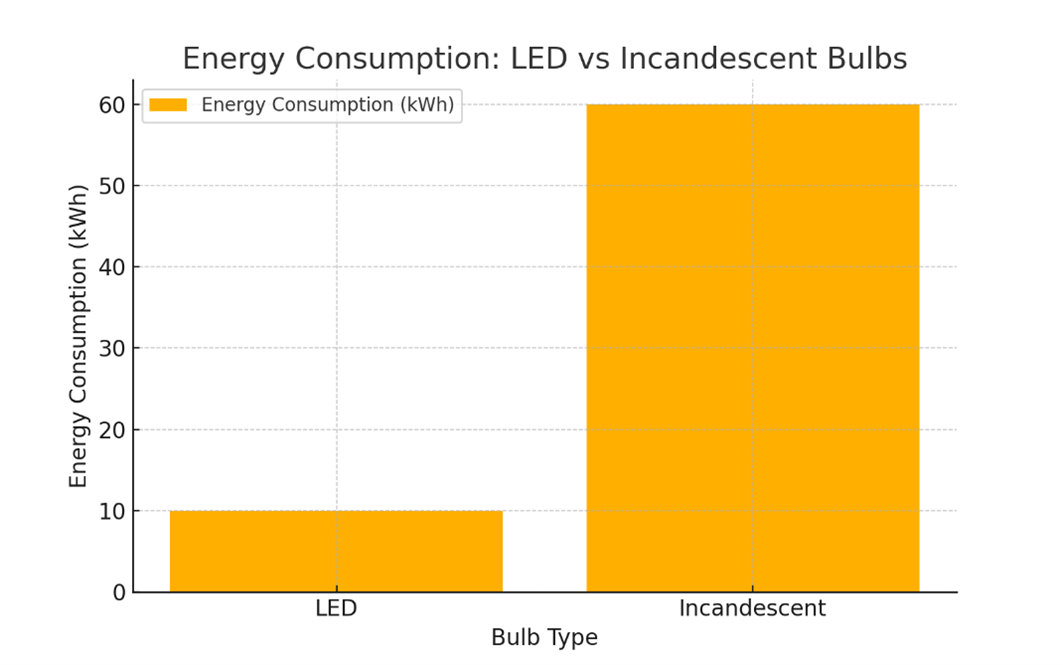How to Reduce Household Energy Consumption
Energy Conservation ?? Comments 30/Jan/2025 ThuReducing household energy consumption is both an economic and environmental priority for many households. By adopting practical and sustainable practices, individuals can lower their energy bills while contributing to a reduction in greenhouse gas emissions. Below are some effective strategies:
Practical Steps
-
Replace Traditional Incandescent Bulbs with LED Lights
LED bulbs are significantly more energy-efficient compared to traditional incandescent bulbs, consuming up to 75% less energy and lasting up to 25 times longer. This not only reduces electricity usage but also minimizes the frequency of replacements, leading to further savings. For example, replacing five frequently used incandescent bulbs in a home with ENERGY STAR-certified LEDs can save approximately $75 annually in energy costs.
-
Use Smart Power Strips to Prevent Phantom Energy Usage
Phantom energy, or standby power, refers to the energy consumed by electronics even when they are turned off or not in use. Devices such as TVs, gaming consoles, and chargers are common culprits. Smart power strips automatically cut off power to devices when they are not actively being used, ensuring that energy isn’t wasted unnecessarily. This simple step can reduce household energy consumption by 5% to 10%.
-
Optimize Thermostat Settings for Seasonal Efficiency
Adjusting thermostat settings is one of the simplest and most effective ways to save energy. Setting the thermostat to 68°F (20°C) during the winter and 78°F (26°C) during the summer can strike an ideal balance between comfort and efficiency. For additional savings, consider using a programmable or smart thermostat that adjusts the temperature automatically based on daily schedules. Lowering the thermostat by 7°-10°F for 8 hours a day during the heating season can save up to 10% annually on heating costs.
-
Seal Windows and Doors to Prevent Air Leaks
Ensuring that doors and windows are properly sealed can significantly improve a home's energy efficiency. Use weatherstripping or caulking to close gaps and prevent drafts. This reduces the workload on heating and cooling systems, lowering energy consumption while maintaining indoor comfort.
-
Upgrade to Energy-Efficient Appliances
When replacing household appliances, choose models with ENERGY STAR certifications, which are designed to use less energy without compromising performance. For instance, ENERGY STAR refrigerators use approximately 15% less energy than non-certified models. Over time, these appliances provide substantial savings on utility bills.
-
Leverage Natural Light and Ventilation
During the daytime, maximize the use of natural light by keeping curtains or blinds open to reduce the need for artificial lighting. Additionally, take advantage of natural ventilation by opening windows in the evening or early morning during summer months to cool the home, thereby reducing the reliance on air conditioning.
-
Insulate Walls and Attics
Proper insulation is critical in maintaining a stable indoor temperature, reducing the need for excessive heating or cooling. Investing in high-quality insulation materials for walls, attics, and floors ensures long-term energy savings. Insulating the attic alone can save homeowners up to 15% on heating and cooling costs.
By implementing these practical steps, households can achieve meaningful reductions in energy consumption, lower utility costs, and contribute to a more sustainable future.
Example: A family in New York replaced 30 incandescent bulbs with LEDs, saving $150 annually and reducing their energy consumption by 300 kWh.

Tags: energy conservation